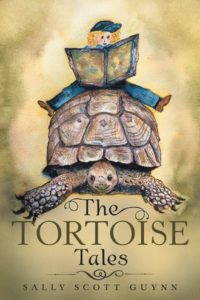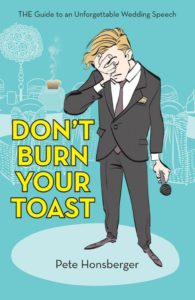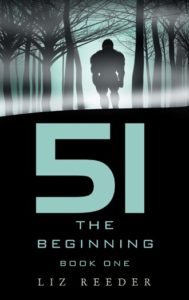The following are the words of Sally Guynn, Archway Publishing author of “The Tortoise Tales.” For more on the author, visit her website and Facebook. Download the Archway Publishing free publishing guide for more information on our supported self-publishing services.
How it all Began
 I entertained fantasies about writing and painting as published and exhibited works ever since a young girl. Eventually, my dreams converged with a single passion to create a children’s book about animals. Was I biting off more than I could chew?
I entertained fantasies about writing and painting as published and exhibited works ever since a young girl. Eventually, my dreams converged with a single passion to create a children’s book about animals. Was I biting off more than I could chew?
The children’s book idea endured through my work careers, and once I retired I wrote my memoirs for my family. It empowered me forward, but I soon discovered that my naïve notion to write a children’s book had morphed into something more challenging—a double-edged sword. On one edge was my dream to write and paint, a lifelong passion, waiting to be freed. The other edge was not knowing what I didn’t know. It dawned on me this wasn’t necessarily a bad thing. A blade with two edges is a sword that can accomplish twice as much, right? The trick was learning how to handle it.
I began writing The Tortoise Tales and found Archway Publishing to help guide me and keep me from ripping my dreams apart with that big sharp sword. In the process, I discovered three things of value that I’d either underappreciated or simply never had a clue about:
1. Getting Clarity About The Type of Book
2. Maintaining A Sense of Urgency
3. Soliciting Feedback
Getting Clarity About The Type of Book
I’d always envisioned writing and illustrating a children’s picture book, but once the Archway Publishing staff helped me rethink the type of book, I realized several important misalignments. My writing voice wasn’t a good match for a picture book and preschoolers, my paintings more watercolors and washes than stylized illustrations, and my original target audience were now already reading for themselves.
Having already completed many paintings in color at this point, the Archway staff advised making the book more affordable by less artwork and matching more closely with my revised target audience–middle readers who preferred fewer illustrations, no color, and more text. Most importantly, I wanted my book to stimulate a curiosity about nature and wildlife in young people and influence them to go outside and enjoy it. Again, Archway to the rescue when they told me I didn’t need tons of color illustrations to accomplish that goal. Middle readers don’t like anything too babyish. I easily saw the wisdom in making changes to the book’s formatting.
Maintaining A Sense of Urgency
Putting off my children’s book for so long likely increased both my sense of urgency and desire to leave a legacy. But these were good things. Once I began writing The Tortoise Tales, I wrote, researched or edited several hours, at a minimum, every day. If a conflict arose, I made up the time the next day or evening. I believe having this strong sense of urgency elevated the task in my eyes, inadvertently preventing procrastination.
Soliciting Feedback
 Soliciting feedback came naturally for me throughout the process. I didn’t resist experimentation and change. It allowed me to take risks that quite often led to improvements. And, perhaps because I’d been a teacher, I tested my stories in both public and private school classrooms and later with seniors over fifty years old at the Lifelong Learning Institute here in my city. Their collective feedback proved invaluable to the book as well as bolstering my confidence.
Soliciting feedback came naturally for me throughout the process. I didn’t resist experimentation and change. It allowed me to take risks that quite often led to improvements. And, perhaps because I’d been a teacher, I tested my stories in both public and private school classrooms and later with seniors over fifty years old at the Lifelong Learning Institute here in my city. Their collective feedback proved invaluable to the book as well as bolstering my confidence.
After the book was printed, I managed to spring for the additional dollars to purchase one of Archway’s professional review packages that included objective reviews from Kirkus, Blue Ink, and Clarion. I learned a huge lesson: If you want your book to succeed beyond peddling it out of the trunk of your car, you absolutely need to have it professionally reviewed to get it on the databases from which libraries and bookstores order.
Archway Publishing is always looking for content for its blog. If you’re an Archway Publishing author and would like to share a guest blog post, please visit our Blog Guidelines Page.






 Read: We are often inspired by others. In fact, that may be the reason you started writing in the first place. Maybe you read a story that sucked you in completely and charged you up to write something of your own. Take some time to go back to those roots. Read something you really enjoy; even better if it’s in the same genre you’re writing in. See how someone else spins a sentence or brings a character to life. Let someone else inspire you instead of trying to will creativity into existence.
Read: We are often inspired by others. In fact, that may be the reason you started writing in the first place. Maybe you read a story that sucked you in completely and charged you up to write something of your own. Take some time to go back to those roots. Read something you really enjoy; even better if it’s in the same genre you’re writing in. See how someone else spins a sentence or brings a character to life. Let someone else inspire you instead of trying to will creativity into existence.
